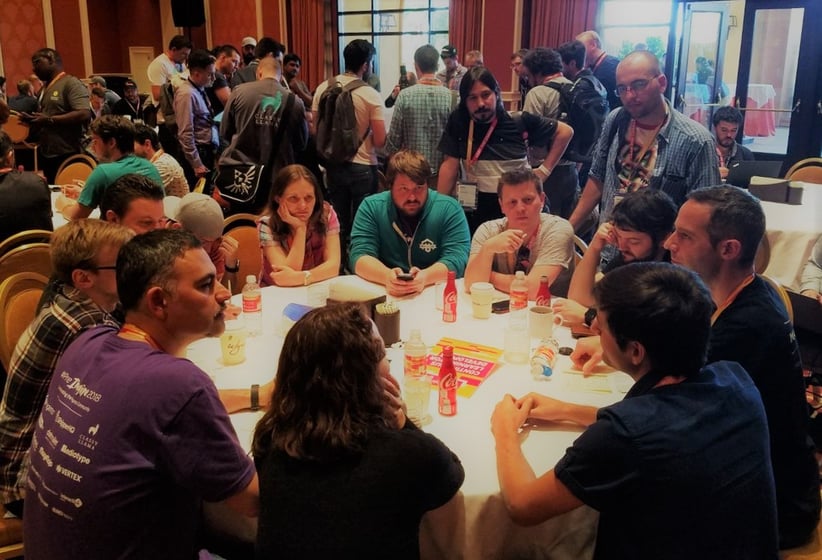The most engaged developers from the Magento community met at Magento Imagine 2018 to discuss improvements to the user experience of this commerce platform. Let’s recap the conclusions.
I had the pleasure to participate in Magento Imagine DevExchange 2018 talks around UX in Magento. The table was organized by Danielle Mundle (@UXdanielle) from Magento and supported by Misha Kotov (@mish_capish) also from Magento.
This was kind of an interesting discussion with multiple topics, built around improvements to the user experience in the Magento commerce platform. The community voice is clear: we should use knowledge about behavior and needs of Magento users. To do so it is necessary to structurize the process of gathering information and testing hypotheses.
Progressive Web Apps might be helpful here, as with this new concept the community has many opportunities to learn.
Things I think are worth noting are:

How to improve overall UX of Magento
For sure the default UX at Magento 2 is much better than in Magento 1. We even produced a detailed description a year ago. But we still see there is a lack of process that will help us all improve this. It would be great to have a clear and structured way of gathering insights from designers who work with Magento. This could be the first step.
How to develop great UX of Magento shops
At the DevExchange 2018 we discussed the fact that A/B testing is sort of a standard tool right now but clients and designers sometimes have inspirations/hypotheses that need to be tested. We discussed testing tools and libraries that are on the market. It still seems like there is a gap. What would be super-helpful is a library of potential A/B tests divided into industries. Then we could also collect more and more data around these tests. This could be the input for the process I described in the first point.
How can we gather more knowledge about our users
We discussed multiple tools that allow us to see what real users do – HotJar and FullStory. Then we discussed a new startup that allows you to see every single user journey – for example, you can check how the user journeys of the last 10 abandoned carts look – cux.io.
How PWA will impact UX
There was an interesting discussion about Progressive Web Apps and its implications. So a PWA is a website that can be installed, and that behaves like a native app. We discussed how users will understand this concept and what the current limitations of PWA are. You can check what is possible at this demo shop built on Vue Storefront.
We have gathered developers basic questions and answers about Progressive Web Apps. But for sure we need to think more about PWAs and collect more data. This is also an interesting topic for further discussions.
PWA as a chance for new and better UX process
We also compared how the design and implementation process looks across different companies. We see that with PWA, we will bring new people to the Magento community and this is also a chance to build even more agile and modern UX processes. One idea could be to build a Design System around PWA for Magento. Then we can have common design ground between various PWA initiatives – both Magento-backed like The PWA Studio and community-driven.

My conclusion
In general, it looks like we need more UX designers in the Magento community. PWAs can help us engage more designers to take up this new designing challenge. It would be great to build a UX community around Magento or even eCommerce itself. This place could help us all to share ideas and improve our processes.
Published June 28, 2018











